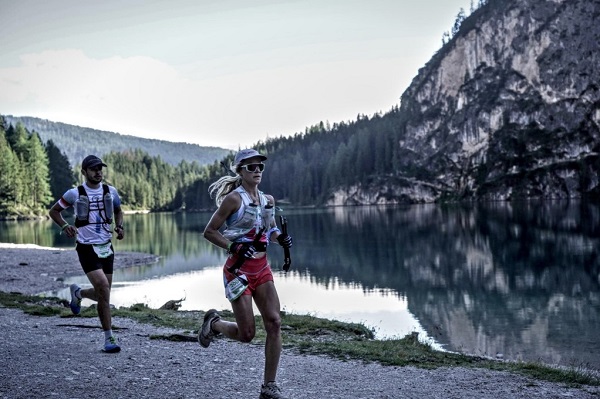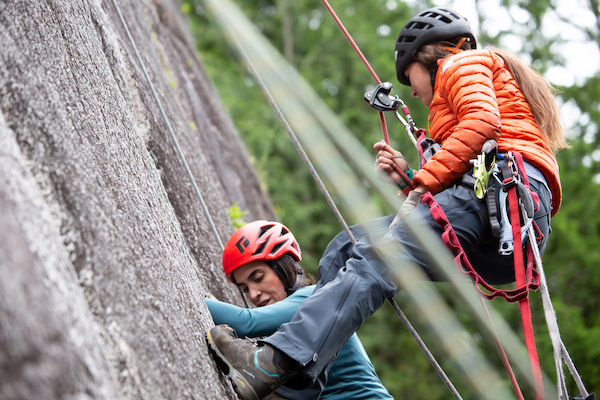Luke Nelson - Commitment vs. Discipline

Mountain runner Luke Nelson points to key differences between commitment and discipline in training...
- - -
For a very long time I thought I understood athletic discipline. I thought it was about sticking to the plan: getting up early to complete workouts before work, going out to train regardless of weather, and doing the workout no matter how I felt. I often felt that even if the workout was hard, or if I was really tired, it had to be done. For eight years this is how I trained. I held very strongly to the ideal of no pain, no gain.
This commitment to training yielded pretty good results for a long time. I worked very hard and saw progress. I would write out a rough outline of workouts a couple weeks at a time, and I would complete them. Simple, right?
Not quite: I had confused commitment with discipline. The two concepts are related but at times can be at odds with each other.
I have no problem with athletic commitment, which is dedication to a training plan. Commitment pushes you out the door every day, it has you doing every workout and doing each one exactly as planned. Make no mistake—commitment is key to achieving goals and it can be a tremendously powerful tool. But it can also be a huge stumbling block on those days when you should not do a workout because you’re too fatigued, sick, or have a nagging ache. If you’re committed, you do the workout. For the committed athlete, it is never a question of whether you should do the workout, it is only a question of when you'll get it done on a given day.
I find that it is much harder to be a disciplined athlete. I began to understand discipline about a month after I started working with Uphill Athlete coach Scott Johnston. While analyzing previous training that I had been doing, we found that I had been drifting toward the middle. I was doing easy workouts too hard, which had the effect of leaving me too tired to do hard workouts hard. I was doing the majority of the training at a moderate level, and sacrificing results because of it. I was committed, but I did not have the discipline to craft a really good plan and modify it when necessary.

One of Luke Nelson's summer adventure running expeditions. Destination: the Faroe Islands.
Having a well-designed plan provides direction in training. It follows well-understood principles of training stress and training adaptations. It allows for rest days. For me, recovery may be the most important element of having a plan. After periods of buildup, the body needs time to absorb the hard work. This can take the form of a recovery run or swim the day after a hard workout, or a recovery week after a buildup of several weeks. The time when the training stimulus is strategically removed is when the body will rebuild and emerge stronger.
Most importantly, every workout in the plan is there for a reason; each action I take in my training—whether it be distance, intensity, or recovery—serves a purpose, all orchestrated by my trainer, Scott. A solid training plan will lead to improvement, and each purposeful workout builds momentum. Quality reigns over quantity. As the plan progresses, the athlete should see gains and improvements in benchmarks.
Discipline requires the athlete to be aware of the effect of training on the body, especially while working one-on-one with a coach who lives elsewhere. The disciplined athlete understands the purpose of the workout and executes the workout with that primary goal in mind. If the plan calls for an easy run, both the committed athlete and the disciplined athlete do the run. The difference is the athlete with discipline keeps the run truly easy, whereas the committed athlete does the run but may go too hard because he is simply feeling good. As a result, the disciplined athlete maximizes the workout and the committed athlete ends up tired. The disciplined athlete also understands that there are times when skipping a workout could yield a better long-term outcome.

Make the hard days hard, the easy days easy, and take time off!
Since I started working with Scott, I have seen consistent progress and improvement. I continue to feel motivated, even when training is hard, because there are noticeable results. I come to starting lines prepared and competitive. Training with a plan has been far more fulfilling and rewarding than I would have imagined.
Nine months into my training program with Scott, I crossed the finish line of the Tromso Skyrace in Norway. It was my second race that season and I felt strong throughout, racing against some of the very best mountain runners in the world. The results of nearly a year with a training plan—those crucial months of coaching, training, and rest—were obvious.
The process of becoming disciplined in training requires good communication between coach and athlete—and complete honesty on the part of the athlete with regard to how his or her body is responding to and recovering from training. It is easy to be a committed athlete. It is harder to be a disciplined athlete who is also committed to the training. In the end, I believe discipline is the path to mastery.
Luke Nelson’s 20-week Intro to Ultrarunning Training Plan is available through Uphill Athlete. This program is designed for individuals with some running background who are looking to improve their trail running performance or are competing in their first 50k race.
Q&A With Luke Nelson:

Luke Nelson exploring the incredibly geography of the Faroe Islands—on and off trail.
How do you balance your commitment and discipline for a specific training goal?
On the surface this seems like a simple thing to answer, but is in reality, very complex. I think that most endurance athletes have a personality that lends easily to commitment. That is what it takes to be successful in long mountain efforts. The challenging part is being disciplined enough to stay committed to the training program while also listening to how your body is responding to the program. You need to have the discipline to step back from training goals if your body is not handling the load. Discipline becomes the double-edged sword that has to be wielded mindfully.
How long is a typical training cycle for you?
Training cycles vary in length depending on the objective of the training. Scott has programmed various overlapping cycles as we work toward specific goals. For example, I did a four-plus-month cycle of building volume this past late winter and spring. That transitioned to include a block of intensity that lasted four weeks as we got closer to my first project of the year. Within that cycle there were some microcycles that lasted one to two weeks with specific benchmarks. I should also mention that there are very large macrocycles that we are working on to meet goals that are years from now.
What does a typical year of training look like for you? Do you have an off-season?
For the last few years I have taken most of the month of October off from endurance training. That correlates with the end of the mountain running season and is a great time to rest and let my body rebuild. Starting in November, I use ski touring as a primary movement to start building again for the next year. During the first few months of training, we also put an emphasis on strength training to create durability, which I will draw from when the running ramps up in the spring. Most of my adventure goals happen midsummer through September, so we try to have my fitness peak that time of year.
How do you maintain your motivation?
Staying motivated for running is an easy one for me. I absolutely love running in the mountains. I am happy to do it every day. I find being in the mountains, moving under my own power, clears my mind and nourishes my soul. Maybe the hard part is staying disciplined with running so that I am taking my running where I want to go. It is tough to not go for a long run knowing how it will make me feel mentally, when that may be at odds with the objective of the day’s training session. The whole process needs to be taken into consideration on a daily basis to keep motivation and goals in balance.
You helped develop the 20-week Intro to Ultrarunning Training Plan for Uphill Athlete. In what ways did you incorporate what you've learned from training with Scott into this five-month program?
As we developed the 20-week training program, we took sound and proven training methods, looked at what had worked well for me and other mountain runners, and put together a logical training progression. This program will help take any mountain runner to the next level, but it needs to be applied thoughtfully. There is no one-size-fits-all training system. This plan is a great foundation to take and build/tweak to fit an individual’s needs.
This article was written by Luke Nelson and Uphill Athlete for La Sportiva. Are you interested in learning more about endurance training? Check out http://www.uphillathlete.com/.
Photos ©: Kelvin Trautman









